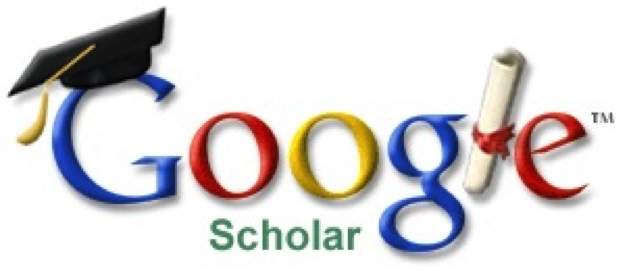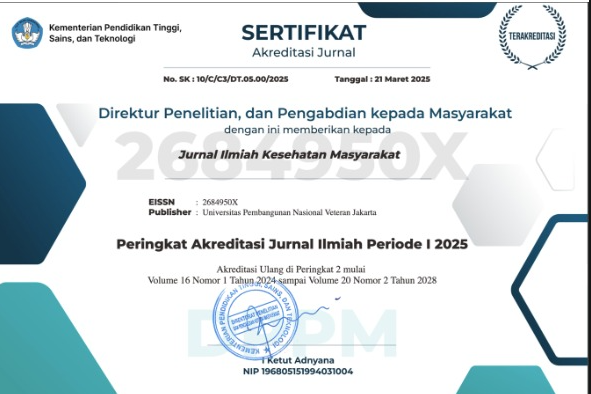Efektivitas Kebijakan Pemasaran Iklan Makanan dan Minuman Tidak Sehat dalam Rangka Pencegahan dan Pengendalian Diabetes Melitus: Literature Review
Abstract
Abstrak
Latar belakang: Indonesia merupakan negara kelima tertinggi di dunia dengan prevalensi kasus diabetes melitus pada tahun 2022 sebesar 13%. Diabetes melitus beserta penyakit komplikasinya mengambil porsi besar dalam pemanfaatan klaim jaminan kesehatan nasional sebesar 8,6% (kurang lebih Rp 12 triliun). Tingginya iklan makanan dan minuman tidak sehat (kandungan gula, garam, dan lemak yang tinggi) khususnya dengan sasaran anak-anak dan remaja menjadi faktor yang mempengaruhi pola konsumsi yang menyebabkan diabetes melitus.
Metode: Penelitian ini merupakan literature review dari artikel yang diterbitkan tahun 2018-2022 melalui database online yaitu PubMed sesuai dengan kriteria inklusi yang sudah ditetapkan peneliti.
Hasil: Dari 4 artikel yang di analisis menyebutkan bahwa adanya pembelajaran dari negara lain terkait penetapan regulasi kebijakan makanan dan minuman tidak sehat (termasuk tinggi gula) yang dapat diadaptasi di Indonesia, salah satunya pembatasan iklan makanan dan minuman, baik dari pembatasan jam tayang, media pemasaran, dan lokasi penempatan iklan yang dekat dengan anak-anak atau remaja. Kebijakan tersebut mampu mempengaruhi masyarakat yang terlihat dari efek penurunan pembelian terhadap produk tersebut dengan diiringi kebijakan pemberian informasi label gizi.
Kesimpulan: Proses adaptasi kebijakan di Indonesia perlu didukung dengan kebijakan lain seperti ada insentif pada produksi makanan dan minuman sehat, disinsentif untuk makanan dan minuman tidak sehat, serta menjaga kestabilan harga bahan pangan sehat.
Kata kunci: Diabetes, Iklan makanan, Kebijakan pangan, Minuman manis, Pemasaran makanan
Abstrak
Background: Indonesia is the fifth highest country in the world with a prevalence of diabetes mellitus cases in 2022 of 13%. Diabetes mellitus and its complications account for a large portion of the utilization of national health insurance claims of 8.6% (approximately Rp. 12 trillion). The high advertising of unhealthy food and drinks (high content of sugar, salt and fat), especially targeting children and adolescents, has become a factor influencing consumption patterns that causes diabetes mellitus.
Methods: This research is a literature review of articles published in 2018-2022 through the online database, namely PubMed according to the inclusion criteria set by the researcher.
Results: Based on 4 articles analyzed, it was stated that there were lessons learned from other countries regarding the establishment of regulations on unhealthy food and beverage policies (including those high in sugar) that could be adapted in Indonesia, one of which was limiting food and beverage advertisements, both from broadcasting time restrictions, marketing media, and ad placement locations close to children or youth. This policy is able to influence the public as seen from the effect of reducing purchases of these products accompanied by a policy of providing information on nutritional labels.
Conclusion: The process of adopting these policies in Indonesia needs supported by other policies such as incentives for the production of healthy food and drinks, disincentives for unhealthy food and drinks, and maintaining stable prices for healthy food.
Keywords: Diabetes, Food advertisements, Food marketing, Food policy, Sugar-sweetened beverages
References
International Diabetes Federation. International Diabetes Federation. Vol. 102, Diabetes Research and Clinical Practice. 2021. 147–148 hal.
Kementerian Kesehatan RI. Infodatin; Tetap Produktif, Cegah, dan Atasi Diabetes Melitus. Pusat Data dan Informasi Kementerian Kesehatan RI. 2020. hal. 1–10.
Perkeni. Pedoman Pengelolaan dan Pencegahan Diabetes Melitus Tipe 2 Dewasa di Indonesia 2021. Glob Initiat Asthma. 2021;46.
8 Penyakit yang Menghabiskan Dana BPJS Kesehatan. 2021.
United Nations. The sustainable development goals report 2019. United Nations Publ issued by Dep Econ Soc Aff. 2022;64.
The nine global voluntary targets from the WHO Global Action Plan for... | Download Scientific Diagram. 2013.
Kementerian Kesehatan RI. Buku pedoman manajemen penyakit tidak menular. 2019;2.
Azizah KN. Disinggung Menkes Imbas Gaduh Es Teh, Diabetes Ditanggung BPJS Nggak Ya? Detikhealth. 2022.
Puspikawati SI, Dewi DMSK, Astutik E, Kusuma Di, Melaniani S, Sebayang SK. Density of outdoor food and beverage advertising around gathering place for children and adolescent in East Java, Indonesia. Public Health Nutr. 2021;24(5):1066–78.
Wahyuniar L, Karyadi L. Pengaruh Iklan Makanan/Minuman/Suplemen Vitamin-Mineral Di Tv Terhadap Pola Konsumsi Remaja Di Wilayah Jakarta Timur. J Ilmu Kesehat Bhakti Husada Heal Sci J. 2020;11(1):95–113.
Jensen ML, Carpentier FD, Adair L, Corvalán C, Popkin BM, Taillie LS. Examining Chile’s Unique Food Marketing Policy: TV Advertising and Dietary Intake in Preschool Children, a pre and post policy study. HHS Public Access. 2022;16(4):1–20.
Blasco MM, Jiménez-Morales M. Soft drinks and sugar-sweetened beverages advertising in Spain: Correlation between nutritional values and advertising discursive strategies. Int J Environ Res Public Health. 2020;17(7):1–12.
Taillie LS, Busey E, Stoltze FM, Dillman Carpentier FR. Governmental policies to reduce unhealthy food marketing to children. Nutr Rev. 2019;77(11):787–816.
Kovic Y, Noel JK, Ungemack JA, Burleson JA. The impact of junk food marketing regulations on food sales: an ecological study. Obes Rev. 2018;19(6):761–9.
Kusnali A, Puspasari HW, Rustika R. Kemitraan Pemerintah-Swasta dalam Industri Pangan untuk Menurunkan Kandungan Gula, Garam dan Lemak dalam Pangan Olahan. J Kedokt dan Kesehat. 2019;15(2):102.
Ningtyas I, Handayani D, Kusumastuty I. Pengetahuan Nutrition Facts dan Pemilihan Makanan Kemasan Mahasiswa Obesitas antara Metode Edukasi Personal dan Ceramah. Amerta Nutr. 2018;2(3):271.
Mediani N V. Pengetahuan, Persepsi, Sikap, dan Perilaku Membaca Label Informasi Gizi pada Mahasiswa. [skripsi] Institut Pertanian Bogor. 2014.
Rossa, Vania; Afrianti D. Studi: Pembatasan Iklan Produk Tak Sehat Turunkan Angka Obesitas pada Anak. 2020.









.jpg)








